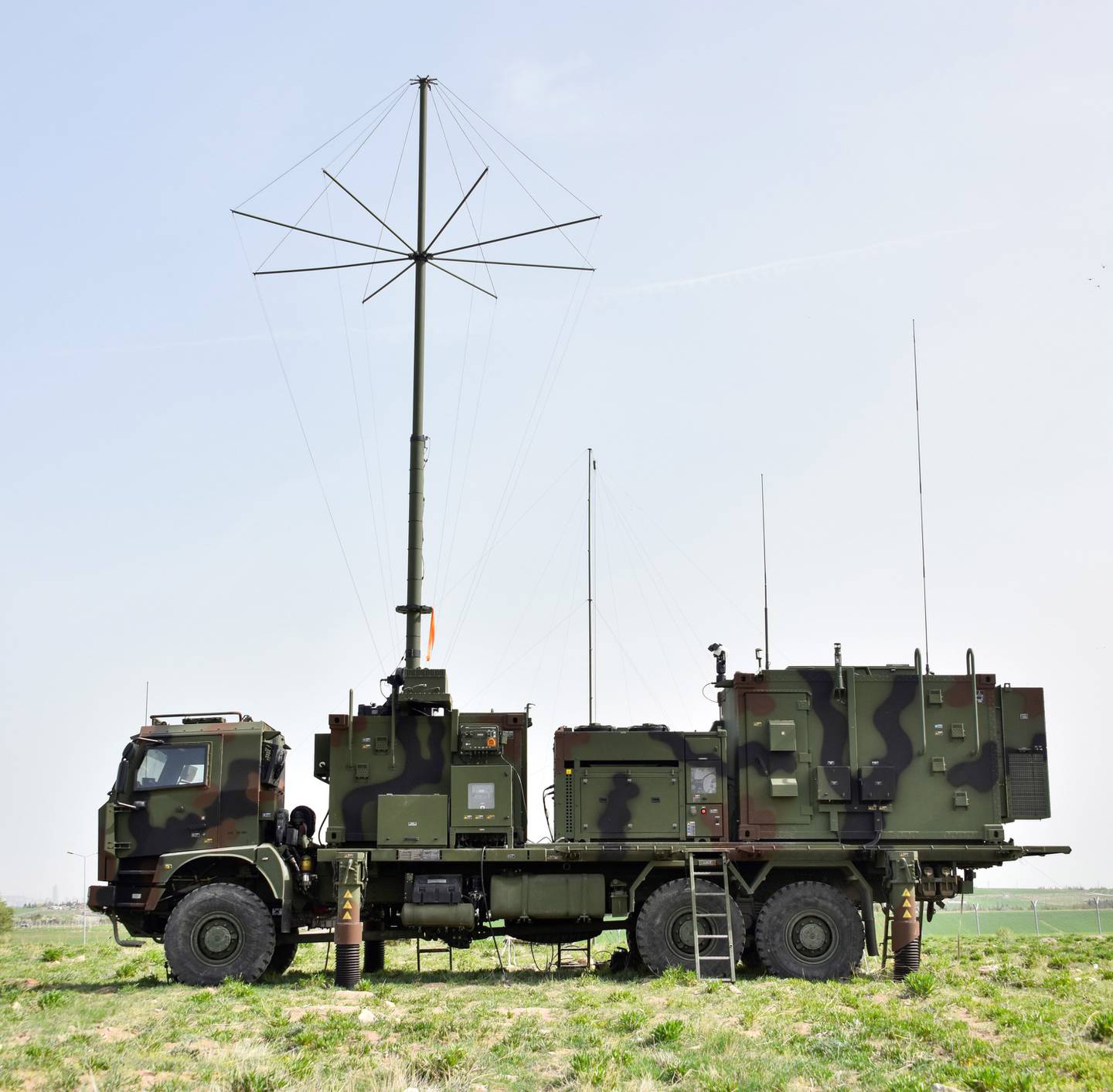TURKISH EW SYSTEMS - The Unseen Force Behind Recent Turkish Drone Successes
Feridun Taşdan
Issue 106
In recent months we have seen extensive news coverage of real combat footage of Turkish drones, namely TB2 and ANKA, in Syria, in Libya, and most recently in Karabagh, Azerbaijan. These real-time war images showed that tanks, armored vehicles, artillery pieces, ammunition depots, trucks, and even bunkers are all decimated with armed TB2 and ANKA drones. Of course, during these drone strikes, heavy casualties are inflicted on the soldiers or paramilitary forces on the ground. But one of the weapon systems that is not mentioned in the above casualty list was air defense systems which were supposed to protect the battlefield from drones like TB2 or ANKA. Why have they failed? What could be the reason(s) that some of these SA-22 Pantsir, SA-15 TOR, SA-8 Gecko, SA-17 Buk, or even Armenian SA-20 (S-300) fell victim to TB2 and ANKA strikes.
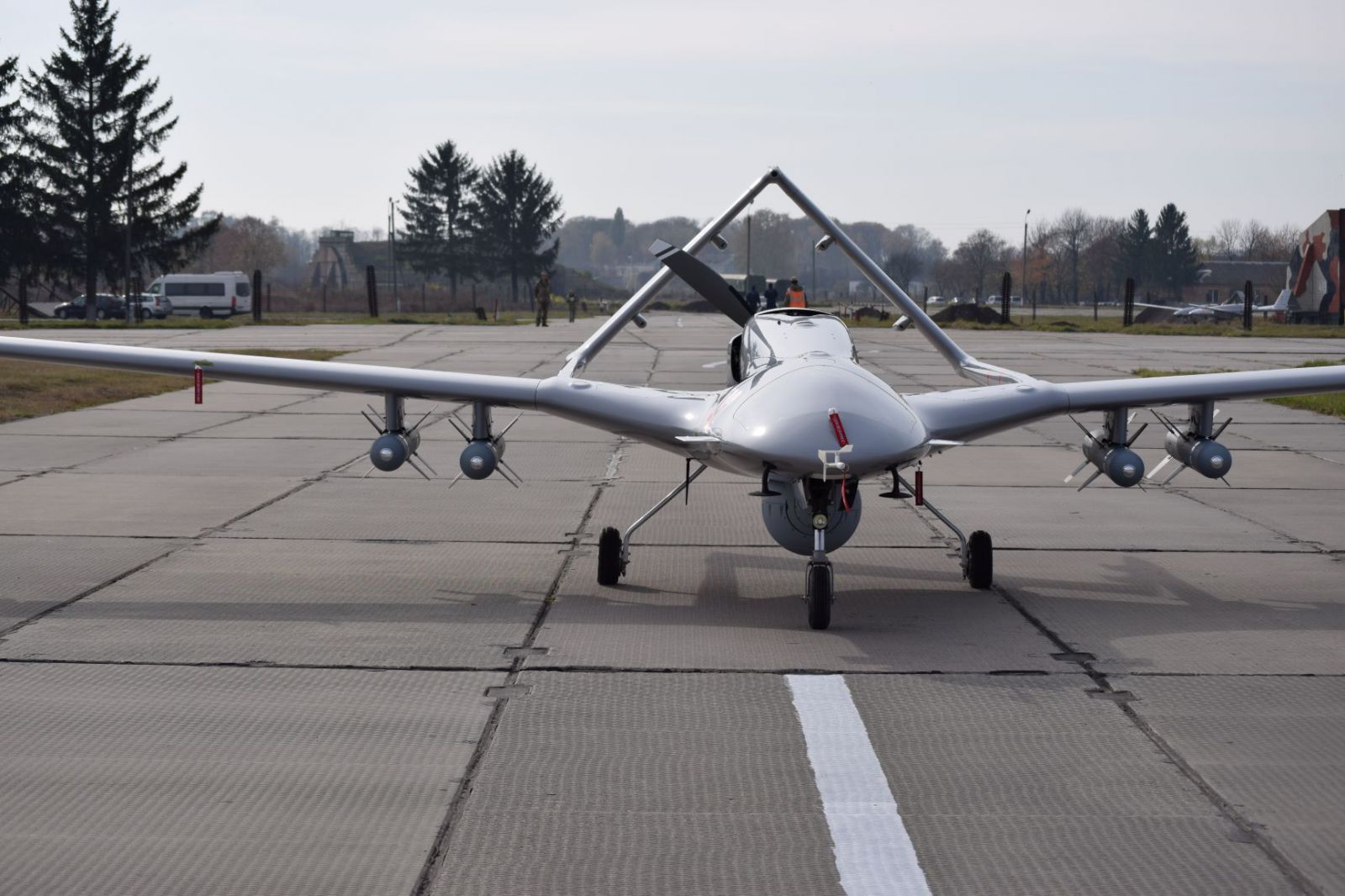
TB2 BAYRAKTAR is seen with 4 MAM-L Munitions under the wings
TB2 is a tactical class (650kg MTOW) UAV built indigenously by Baykar Company in Turkey. It has a flight endurance of 20+ hours at 18-20,000 feet in which its main sensor (Wescam MX-15D by L3Harris) can find, classify, and designate ground or sea targets from these altitudes and also streams video footage of the battlefield to the ground control stations from 200km away. The initial goal was to supply Turkish Armed Forces, mainly Turkish Land Forces Command and other internal security forces (Gendarme, Police) with TB2s to provide real-time ISR (Intelligence, surveillance, and Reconnaissance) information against the PKK, which is recognized as a terrorist organization that is has been staging deadly attacks on Turkish military posts and civilians in Eastern Turkey. In the meantime, Roketsan (a Turkish company that produces rockets and missiles) started the serial production of MAM-L (Micro Smart Ammunition with laser seeker), which weighs about 22.5kg (10kg warhead) with a 4-quadrant laser seeker in the nose. Baykar took this opportunity to start trials with MAM-L on TB2, and within a year or so, the Turkish Armed Forces received their first armed drones. So, the destructive power of the TB2 comes from a typical load of 4 MAM-L under its wings. Even a smaller and lighter Micro Smart Ammunition MAM-C (10kg) was also developed in later years. The introduction of MAM-L on TB2 was a huge shift in the fight against the PKK because they were hiding in the remote mountains of Eastern Turkey, Northern Iraq, and some parts of Northern Syria. The Turkish Army’s fight against the PKK is considered asymmetric warfare since the PKK does not operate heavy weapons or does not operate in air and sea domains. With the availability of armed TB2, Turkish forces would now be able to hit time-sensitive targets without waiting for artillery or air support. In a typical engagement of ground targets, TB2 finds the targets and receives a strike approval from the chain of command, and launches its MAM-L from a range of 8km with laser designator option or 14km with INS/GPS version of MAM-L. TB2 production numbers already exceeded 100+ as its popularity grew and gave way to export orders from Qatar, Ukraine, and Azerbaijan. As TB2 proved its effectiveness in real combat conditions, many more international orders for TB2 might be received in coming years. In the meantime, Baykar is working to improve TB2 with new add-on sensors such as SATCOM, deicing systems, and anti-jamming GPS and secure data link systems.
Another branch of the Turkish Armed Forces, TuRAF (Turkish Air Force), purchased IAI-made Heron-1 medium altitude long endurance drones and has been operating them with success since 2011, but their numbers were limited (only 3 systems, 10 HERON UAV purchased). Turkish F16 and Heron are constantly used to strike PKK hideouts in the mountains of eastern Turkey and Northern Iraq. Heron’s main ISR sensor was the Aselsan (military electronics company) made AF300 FLIR system which gave the TuRAF the ability to laser-designate ground targets, while F16s could drop their GBU-10/12 LGB bombs with high accuracy, but Herons did not carry any weapons, so, they could not strike any time-sensitive target, or any target at all for that matter.
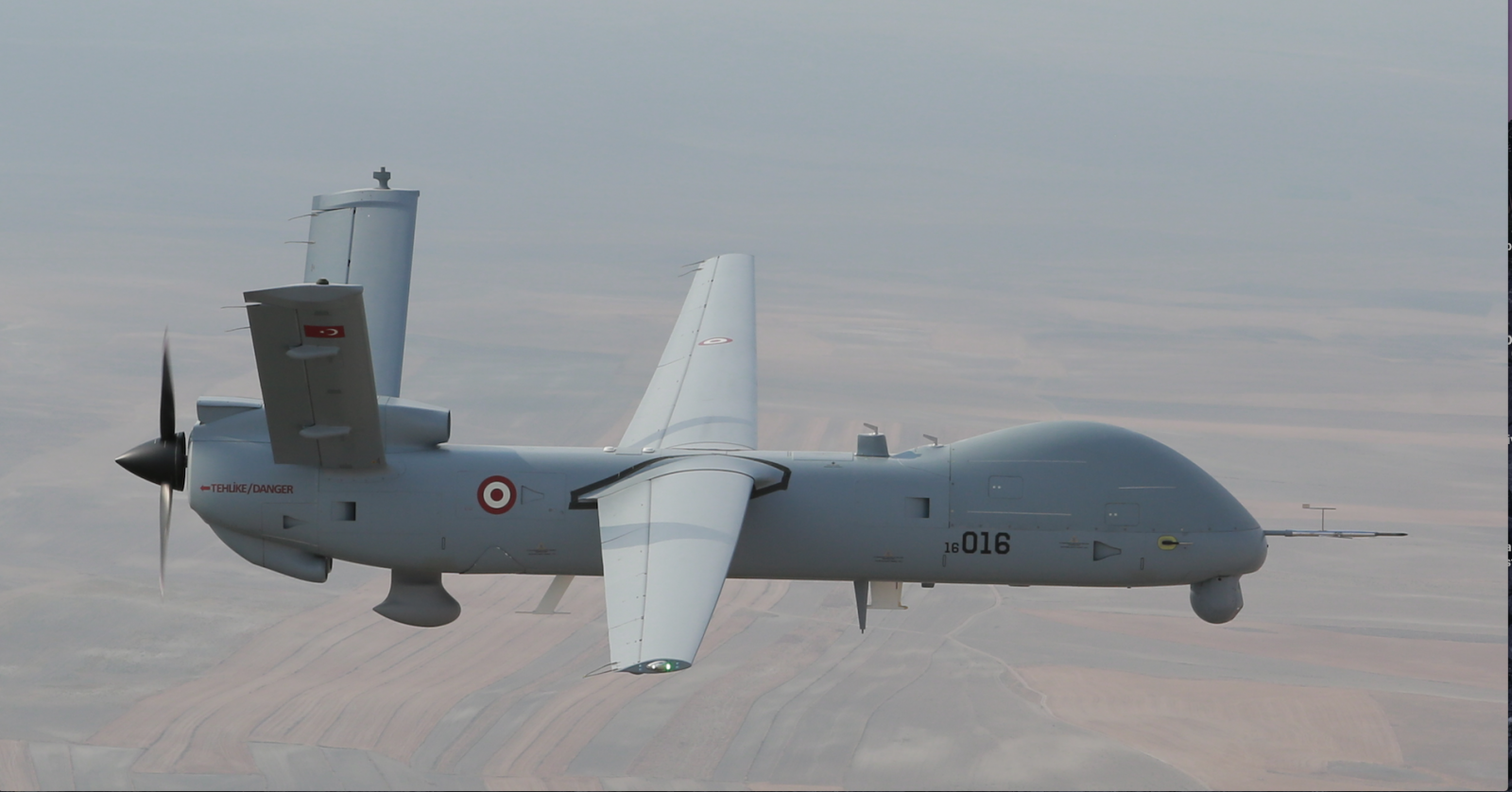
While Turkish Aerospace Industries (TUSAŞ) started the indigenous development of medium altitude long endurance (or MALE class) ANKA drones in 2008, the project’s final production version of ANKA-B only became operational in 2016. The TuRAF was very ambitious in its request for the ANKA from TUSAŞ and asked for some improvements to be made in the production version ANKA-B. Among those requested improvements SATCOM, PD170 diesel engines (made by Turkish Engine Industries and provides 170hp), long-endurance, Aselsan made CATS E/O and Laser Designator system, PLS (Personal Locator System to find ejected aircrew), and armed with suitable weapons. TUSAŞ designated this version as ANKA-S, which is considered the most advanced ANKA. It could be one of the best-equipped UAVs in the MALE category.
The maximum takeoff weight (MTOW) for ANKA-S is 1.6 tons. It can carry 4 of MAM-Ls and operates at altitudes of up to 30,000 feet. SATCOM gives ANKA-S almost unlimited range (with the availability of fuel) and safe communications with ground control stations. ANKA-S proved itself when Turkish forces launched Operation Spring Shield in the Idlib region of Syria against Syrian forces in March 2020. ANKA-S operated under heavy Russian GPS jamming and spoofing conditions, as reported by some Turkish news outlets. The TuRAF's initial order for the ANKA-S was 10, but later 10 more were added to the order.
Turkish Naval Forces also ordered TB2 and ANKA-B for patrolling Turkish coastlines and to provide remote ISR and strike capability in the Aegean and Mediterranean Seas.
During Turkish Forces' Operation Spring Shield operation, which was conducted over the Idlib region (about 35-40km from Turkish borders) in Syria, Turkish TB2s and ANKA-S faced a wide range of air defense systems (ADS) while striking Syrian ground forces in the battlefield. While the TuRAF's F16 were providing air cover over Idlib, TB2 and ANKA-S had to cope with threats coming from Syrian ADS, which mainly consisted of Pantsir-S, Buk, S200, and even S300. During the initial wave of the skirmishes, the Syrian Air Force tried to attack Turkish positions, but Turkish Air Supremacy over the Idlib region was so intense that as soon as Syrian aircraft took off from their bases, they were tracked by TuRAF E-7T AEW aircraft and eventually shot down by Turkish F16s. According to the official Turkish Ministry of Defense briefing, the TuRAF shot down 2 Su-24, 1 L39 Albatros, and 1-3 Mi-8/17 helicopters from stand-off ranges without entering Syria's airspace.
After establishing air dominance, TB2 and ANKA-S were able to operate freely and started their work on gathering information and targeting Syrian forces on the grounds of the Idlib region. After losing air supremacy, Syrian forces tried to rely on their ADS to protect the airspace over Idlib from TB2 and ANKA-S. Turkish F16s and other AEW, AAR assets stayed out of the conflict zone, but the close proximity of Idlib to Turkish borders made it easier for the TuRAF to safely keep an eye on the airspace while staying about 35-40km deeper into Turkey.
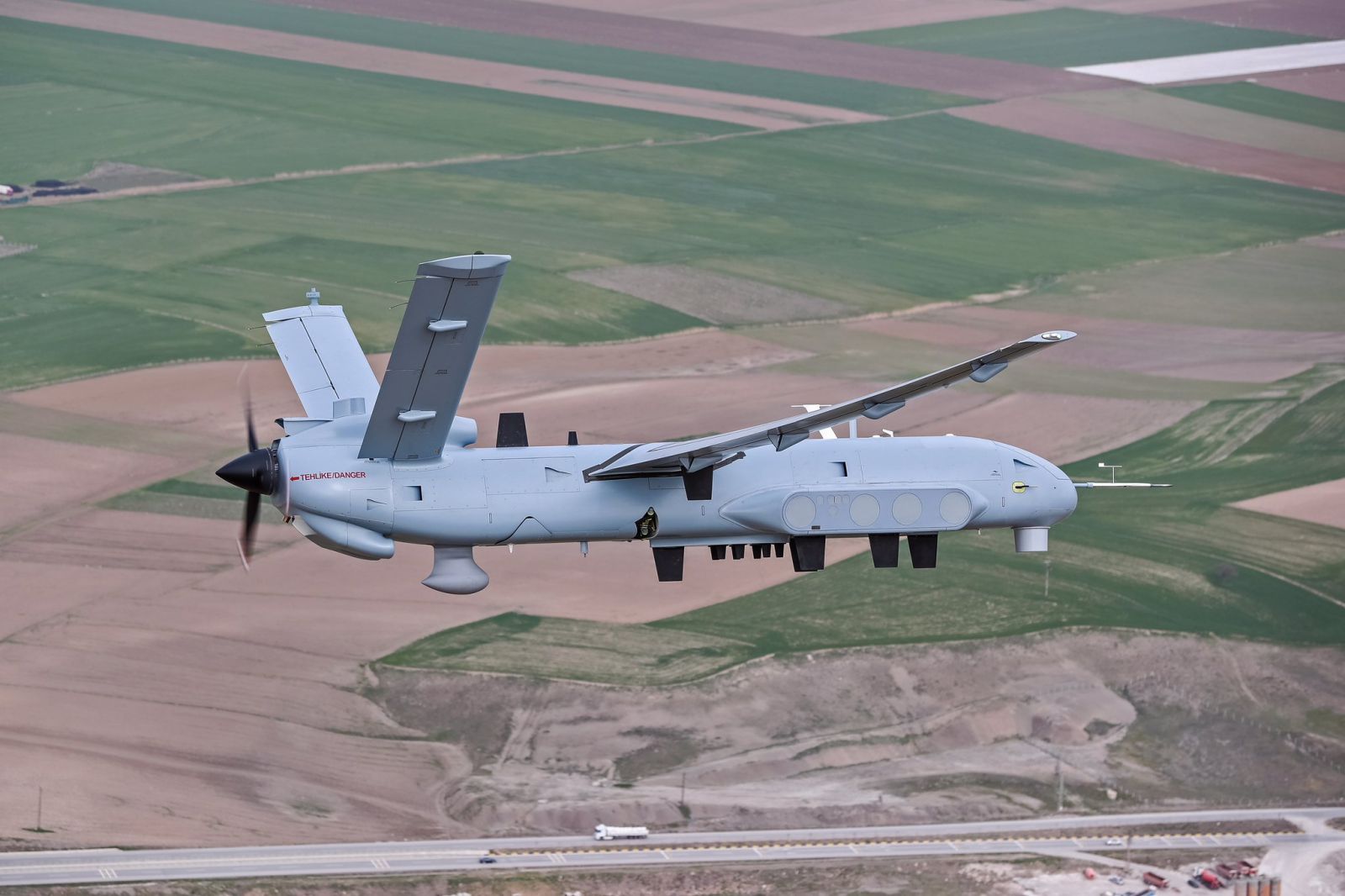
ANKA-I ELINT/SIGINT Configuration
Turkish TB2 and ANKA-S needed to work around Syrian ADS to provide real-time ISR to the Turkish command and control chain during the land operations. Turkish drones needed some help from Turkish EW assets, which were also located at Turkey's Idlib borderlines, to keep an eye on the Syrian ADS activities. It is noteworthy here to talk about the Turkish Armed Forces' land-based EW (electronic warfare) systems. In fact, the land-based Turkish EW assets are one of the less know military hardware that is unique to the Turkish Armed Force's operational concepts. Moreover, no other country in NATO, including the US, has an extensive land-based EW system as that of the one operated by Turkish Land and Air Forces. Turkey paid special attention to gaining land-based EW capability since 1990 or even before.
Turkish military electronics company Aselsan produces an array of land-based EW units for Turkish Land, Air, and Naval forces. These systems range from simple UHF/VHF direction finders to more complicated ESM and ECM units that use modern EW techniques, including DRFM. The following is the list of EW systems that are operational in the Turkish Armed Forces:
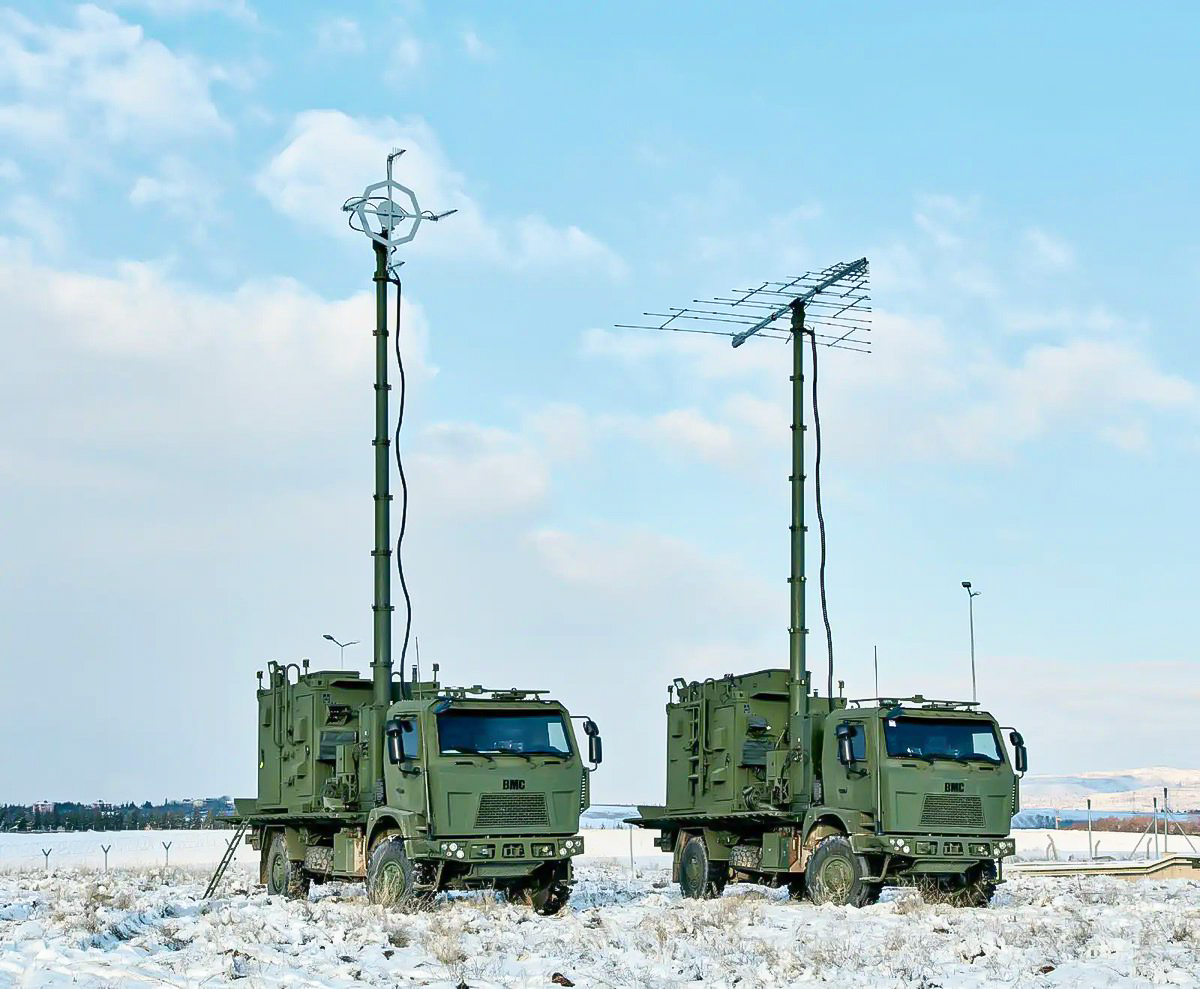
MILKAR-3A UHF/VHF ESM&ECM System
MILKAR-3A3 UHF/VHF Electronic Support (ESM) and Electronic Attack (ECM) System (Aselsan): The system consists of two separate 6x6 trucks with related system antenna assembly and generators. The system has been developed for electronic attack operations against UHF/VHF frequency band communication systems located on the battlefield. The system can either completely block the UHF/VHF frequency band or spoof enemy communications by sending incorrect information to the enemy forces on the battlefield.
MILKAR-4A2 HF Band Electronic Support (ESM) and Electronic Attack (ECM) System (Aselsan): Similar to the MILKAR-3 system, the MILKAR-4A2 system consists of two separate trucks, one for electronic support and one for the electronic attack on the HF frequency band.
MILKAR-5A5 Active/Passive Convoy Protection System (Aselsan): This system is called SAPAN in the Turkish Land Forces inventory. It is designed to protect land forces command's military convoys against IEDs (improvised explosive devices or radio-controlled drones etc.). The system has a wide frequency coverage to disable remote-controlled IEDs and drones flying nearby.
Support and Electronic Attack System (Aselsan): REDET-I was the first version of the system that entered the Turkish Land Forces Command in 2002. The system consists of 2 Electronic Support Measures (ESM) trucks (6x6) and 1 electronic attack (ECM) truck (6x6) and works as coordinated against enemy radar systems operating on the battlefield. According to open sources, the system can perform electronic support and attack capability in the 0.4-40ghz frequency band. The most recent version of the REDET-II system, an improved version of the REDET-I, was ordered in 2015, and the first systems entered the inventory of Turkish Land Forces in 2019.
According to İbrahim SÜNNETÇİ from Defence Turkey Magazine, REDET-II can simultaneously counter multiple hostile radar systems by directing electronic beams through its active phased array jammer/transmitter antennas and active electronically scanned arrays, which are also used in the KORAL System operated by the Turkish Air Force. SÜNNETÇİ adds that "although similar technologies are used in both systems, there are differences between the REDET-II and KORAL Systems in terms of output powers and detecting/jamming ranges. Since KORAL needs to detect and jam hostile radars over longer distances, it is a bigger system than the REDET-II system. While REDET-II is designed to be deployed and operated close (probably up to 100km) to an area of operations (AO), the KORAL Mobile Radar EW System can be used against hostile radars from a few hundred kilometers away."
KORAL Electronic Support and Electronic Attack System (Aselsan): The KORAL is a land-based, full-spectrum radar electronic warfare system designed and produced by Aselsan. It became operational in 2015 and saw first operations in Syria against a wide range of air defense systems, including Russian S400 or Syrian ADS. The system's architecture is based on the operational needs of the Turkish Air Force (TuRAF). At first, REDET-I/II and KORAL look similar systems for similar needs, but the TuRAF’s requirements or specs were much higher than the Land Forces due to the radar and ADS threats faced by the TuRAF from the neighboring states around Turkey. The KORAL system consists of two 8x8 military trucks, each carrying electronic support (ES System) and a multi-band electronic attack system to cover the full electronic spectrum. KORAL has a different antenna architecture compare to the REDET system used by the Turkish Land Forces. According to open sources, KORAL uses a phased array antenna structure to perform multi-band electronic support and attack duties. The system also uses the latest DRFM (Digital Radio Frequency Memory) technology to digitally copy the RF threat signals and retransmit them back to the original radar source with fake signal returns by altering the actual radar returns. This way, the threat radar is spoofed with false targeting information and the air defense systems can miss identify or cannot track real targets for a firing solution. According to open sources again, KORAL is so powerful that it can perform electronic attacks up to 150-200km against RF threats.
When evaluating the performance of TB2 and ANKA-S over Idlib, we should not underestimate the importance of Turkish EW systems support during the operations. While Turkish F16s, AEW, and AAR aircraft were operating nearby to provide air support or gain air superiority, Turkish Air Force and Land Forces strategically located their KORAL, REDET, and other MILKAR EW systems nearby at the borderlines in Hatay, Turkey. Geographically, Turkish borders with Syria in Hatay have a higher elevation with several mountains, including early warning radar sites belonging to the TuRAF. So, locating KORAL, REDET, and other EW assets near the border gave Turkish forces a geographical advantage of controlling the electronic spectrum over the Idlib region.
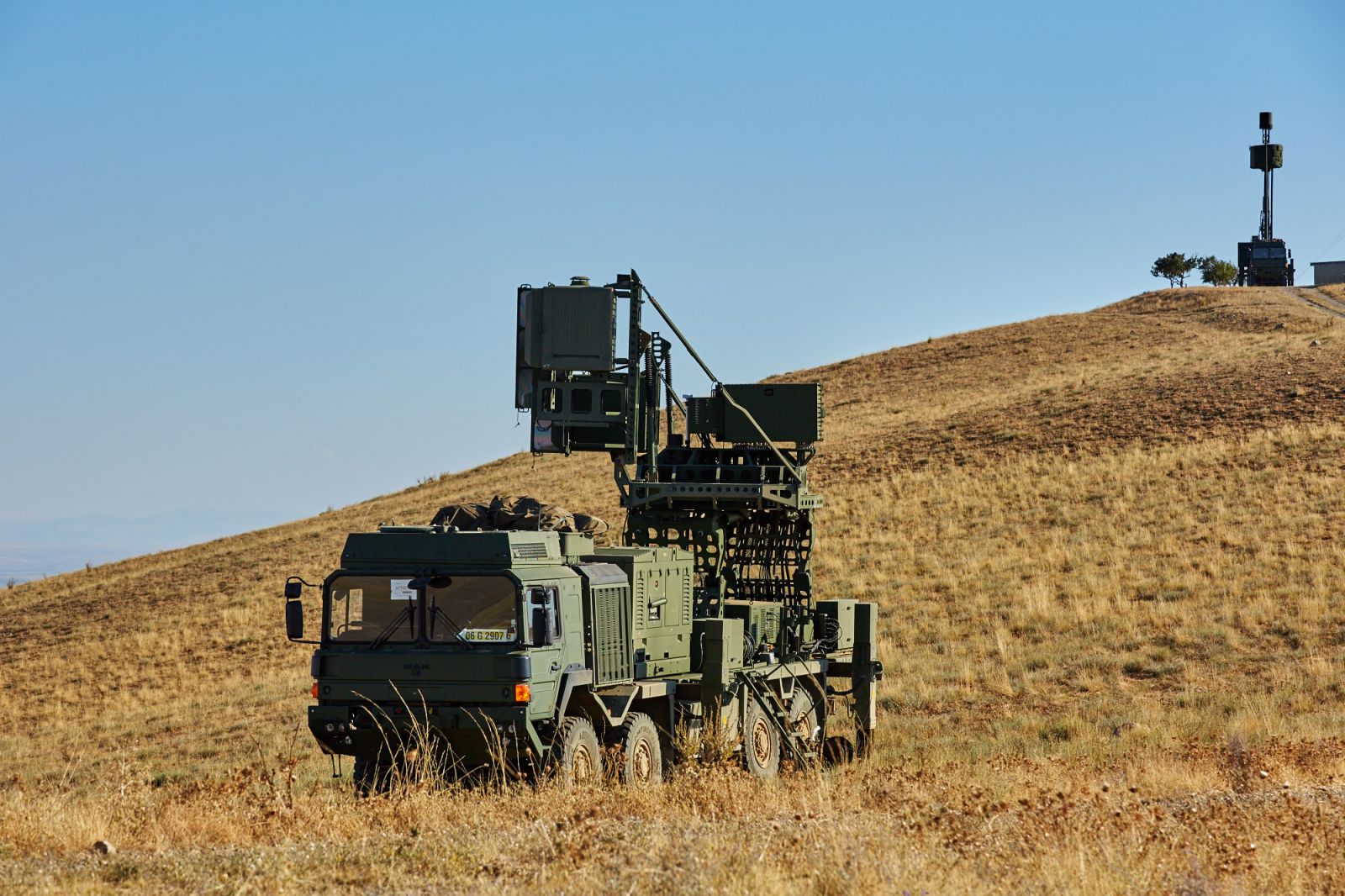
KORAL EW Systems (copyright Aselsan)
Since TB2 and ANKA-S flying over Idlib, as soon as Syrians ADS activated, Turkish command and control systems would have been given a threat radar picture or even geolocate the Syrian ADS with the help of land-based EW systems. TB2 or ANKA-S do not have EW systems for self-protection or a simple RWR (Radar warning receiver). Operators of these drones rely on the RF threat information provided by these land-based EW systems and command and control centers. Of course, all drone flights are coordinated by the Turkish joint operations command center in Hayat. If a Syrian ADS activation is detected during the operation, TB2 and ANKA-S are sent to the area with certain flight formations, mainly several TB2 or ANKA-S operating in coordination. Depending on the threat system, such as SA-22 Pantsir, one TB2 or ANKA-S could be flying higher (no weapons perhaps), and the other attacker drones (maybe TB2s) approaching perpendicular (giving lowest RCS possible) to the threat and dropping MAM-L at the max range. Laser designation could be done with a high-flying TB2 or ANKA-S. The SA-22 Pantsir is a sophisticated Russian-built air defense system, but it also has some limitations. The system uses the CLOS (Command-Line of Sight) guidance method, and therefore, it has to track its targets all the way until its missile reaches the target. Radars on the Pantsir have some elevation limitations that limit their performance on medium or higher altitudes. ANKA-S can fly up to 30,000 feet. Similarly, TB2, if not armed, can reach 24-25,000 feet for ISR missions (depending on weather conditions, of course, E/O systems on these drones have some limitations during bad weather). Of course, we should not forget that Russians designed Pantsir specifically against low-medium flying targets such as cruise missiles, aircraft, helicopters, etc.
As a side note, the Turkish EW systems’ threat library has likely been updated with all ADS and radars operational in Syrian Forces. This capability would have helped Turkish EW systems to identify all known RF threats on the battlefield. At the same time, having the threat library would open a way to develop jamming techniques against these RF threats. Turkish EW systems probably also actively provided ECM coverage during TB2 and ANKA-S attacks on Syrians ADS such as Pantsir or others. If noticed, some of the drone footage provided during the Idlib operations showed that while one TB2 or ANKA-S (which one is difficult to know since both UAV uses the same Wescam MX15D gimbal) was zooming on a Pantsir from a long-range and the tracking radar of the Pantsir was facing the opposite sector as if it had been tracking a target from the opposite side of the Turkish drone recording the footage. This could be due to tracking a fake target (DRFM capability) created by the Turkish KORAL EW from 40-50km away, or if another Turkish drone was approaching as if it was going to attack the Pantsir.
The Turkish Air Force also operates several special mission aircraft such as CN235M SIGINT/ELINT and C160D MILKAR. These aircraft are equipped with special electronic warfare and signal intelligence hardware and pods. Most likely, the TuRAF also operated these aircraft nearby to help on ISR activities against Syrian ADS.
Conclusion
It would be correct to say that Turkish drone operators developed certain tactics to counter Syrian ADS with the help of land-based (or even air assets) Turkish EW systems. The most probable scenario is that Turkish drones and land-based Turkish EW systems were jointly employed and created kill zones against Syrian ADS. Without Turkish EW systems involvement, only using E/O gimbals on the TB2 or ANKA-S to locate and identify Syrian ADSs would have been extremely risky and also difficult due to the large size of the battlefield. Therefore, the Turkish EWs role in the success of Turkish drones cannot be underestimated.TB2’s Karabagh Success can be considered a lesson learned from Operation Spring Shield conducted by the Turkish Armed Forces (TAF). It should not be wrong to say that TAF and TB2 producer Baykar gained valuable operational experience from previous TB2 operations over Idlib (and Libya) and this was reflected in the war over Karabagh between Azerbaijan and Armenia. Turkey had been helping the Azerbajijani Armed Forces for some years in providing training, establishing command and control structure, and supplying weapon systems such as artillery rockets, armored vehicles, communication, and night vision systems, etc. A couple of months before the Karabagh operations started, Turkey sold an unknown number of TB2 and related command and control systems to the Azerbaijani Armed Forces. TB2 operators started their training in Turkey first and continued the training activities until the Karabagh operations started. Turkish TB2 trainers likely continued their training activities during Azerbaijan’s TB2 operations against Armenian forces over Karabagh. Therefore, it is safe to conclude that Turkey’s operational experience and tactics (optimized from Syria and Libya operations) were also transferred to the Azerbaijani Armed Forces. As a result of this close collaboration, Azerbaijan achieved a decisive victory in Karabagh and recaptured some of the Armenian-occupied territories.

TURKISH EW SYSTEMS - The Unseen Force Behind Recent Turkish Drone Successes
 www.defenceturkey.com
www.defenceturkey.com




